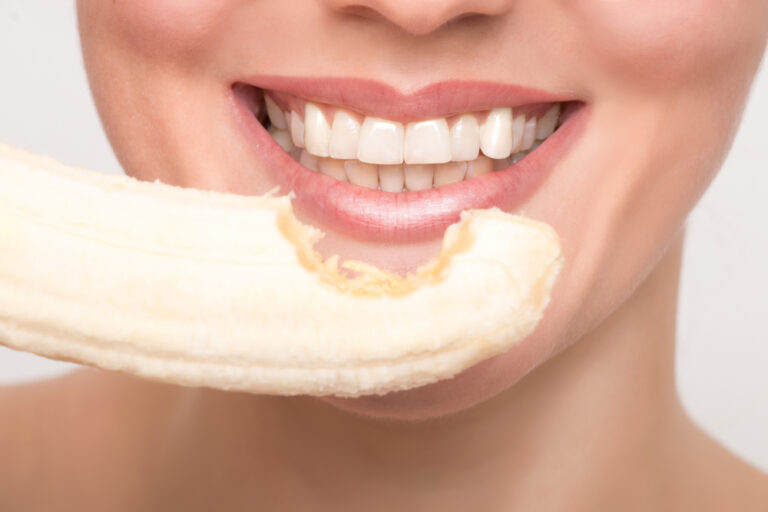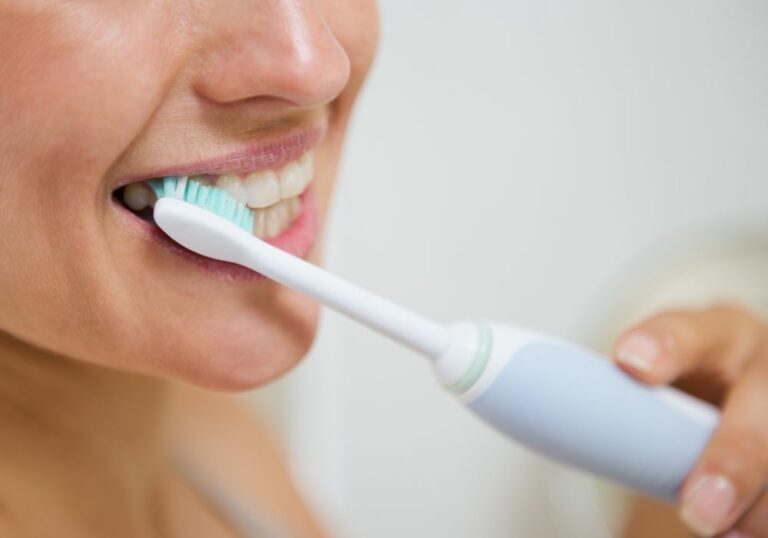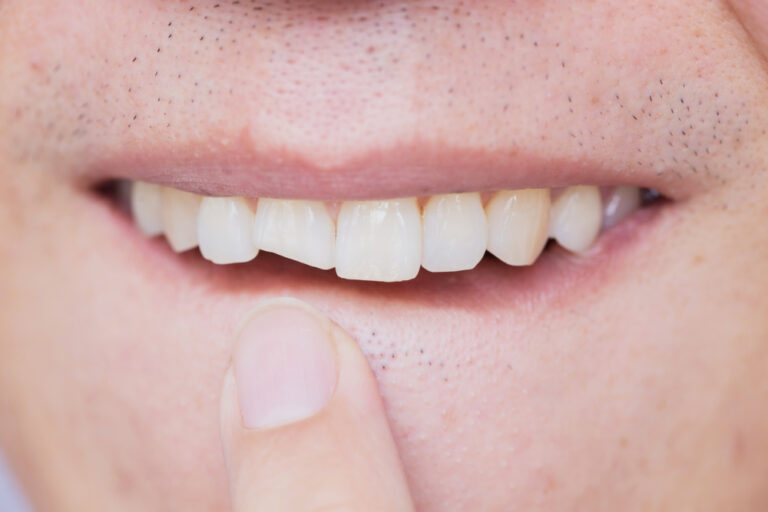What is dental tartar and how does it form?
Dental tartar, also known as calculus, refers to the hard, crusty deposits that can form on the surfaces of teeth. Tartar is formed when plaque, a sticky film of bacteria that constantly forms on teeth, combines with minerals found in saliva.
Plaque contains various types of bacteria that cling to the rough surfaces of teeth and feed on food debris and sugars in the mouth. As the bacteria metabolize these substances, they release acids that can dissolve tooth enamel and cause decay. Normally, plaque is removed by daily brushing and flossing before this can happen.
But when plaque is left on teeth, the minerals in saliva – primarily calcium and phosphate – start to deposit into it. This causes the plaque to harden into tartar, which firmly adheres to teeth surfaces. Tartar deposits gradually increase in size, providing an environment for more plaque accumulation.
The process of tartar formation
Tartar formation occurs through the following steps:
1. Plaque formation
- Food debris, bacteria, and sugars in the mouth interact and form a thin biofilm called plaque on teeth. This starts occurring immediately after eating or brushing.
- Plaque is colorless and soft initially but over time accumulates more bacteria that can cause cavities and gum disease.
2. Mineralization
- Saliva contains dissolved calcium and phosphate minerals, which start to deposit into plaque within 24-48 hours.
- This mineralization process turns soft plaque into hard, tooth-colored tartar (also called calculus).
- Tartar deposits tend to form most prominently along the gumline and between teeth.
3. Maturation
- The longer tartar stays on teeth, the harder it becomes as more minerals incorporate into it.
- Older tartar accumulates more plaque on top of it, forming a thick layer that gets a dark yellow-brown stained appearance.
4. Tartar buildup
- Tartar below the gumline can only be removed by a dental professional. Brushing and flossing won’t remove it.
- More plaque adheres to areas with tartar, which grows the deposits over time.
- Thick tartar buildup starts to visibly alter tooth anatomy and smile appearance.
5. Tooth and gum damage
- The rough tartar deposits collect more plaque bacteria which inflame the gums and cause gingivitis.
- Plaque acids in contact with teeth lead to demineralization and dental caries formation.
- Left untreated, tartar contributes to receding gums, decay, and eventual tooth loss.
Identifying the symptoms of tartar
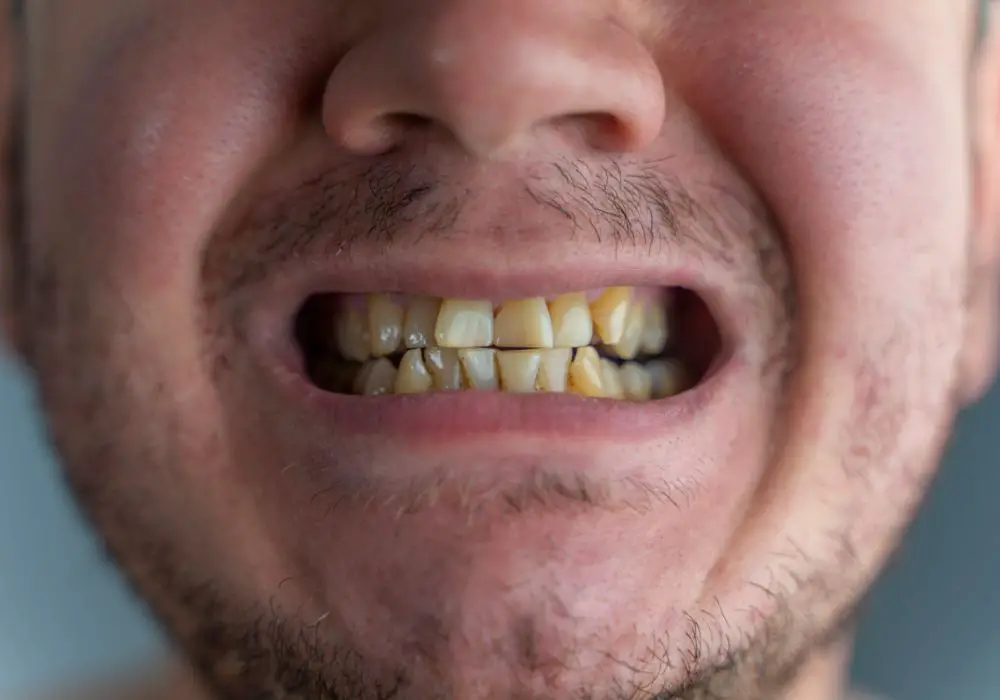
Some common signs and symptoms that may indicate tartar buildup on your teeth include:
- Visible tartar deposits – Yellow, brown, or white crusty deposits visible along the gumline or between teeth
- Tooth discoloration – Teeth appear more yellow or stained
- Tooth sensitivity – Increased sensitivity, especially to hot, cold, or sweet foods
- Halitosis – Bad breath or unpleasant taste in the mouth
- Gum irritation – Red, swollen, or inflamed gums that may bleed easily
- Receding gums – Gums appear pulled away from teeth exposing root surfaces
- Spaced teeth – Increased gaps forming between teeth
- Rough tooth surfaces – Feeling of rough areas or hardened deposits on teeth
- Plaque adhesion – Plaque accumulation in tartar-prone areas despite brushing
If you notice any of these warning signs, it means tartar is present and you should get a professional cleaning to prevent more serious complications. The earlier tartar is removed, the better for your oral health.
Potential risks and complications of leaving tartar untreated
Leaving tartar on teeth can lead to:
- Gingivitis – Chronic gingivitis occurs when plaque bacteria around tartar cause gum inflammation and bleeding. The gums become swollen, turn red or purple, and are painful.
- Periodontitis – Untreated gingivitis can worsen into periodontitis or gum disease. This leads to damage of tissues and bone supporting the teeth. Periodontitis can cause tooth loosening and eventual tooth loss if left unaddressed.
- Dental caries – The plaque and bacteria around tartar deposits release acids that demineralize and corrode the tooth surface. This causes cavities to form which require fillings.
- Abscesses – Gum infection around a tooth can spread to the root tip beneath the gumline creating a dental abscess. This is very painful and the tooth often needs root canal treatment.
- Tooth staining – Thick tartar above and below the gumline causes yellow-brown stained teeth over time. This looks unappealing and requires professional cleaning.
- Halitosis – Bacteria, decomposing food particles, and dead cells get trapped within tartar and cause unpleasant breath odor.
- Difficulty eating – Excessive tartar can make chewing and biting food uncomfortable due to increased tooth sensitivity.
Clearly, the risks posed by tartar buildup are significant. Practicing good oral hygiene and getting regular dental cleanings is key to preventing these problems.
Effective ways to minimize tartar formation at home

You can reduce your chances of developing tartar by:
1. Brushing correctly
- Brush teeth thoroughly twice per day for 2 minutes using fluoridated toothpaste.
- Hold brush at 45° angle toward gumline and use gentle motions.
- Focus on gumline areas where tartar accumulates more.
- Use soft or ultrasoft bristle toothbrush which is gentle on gums.
- Replace toothbrush every 3-4 months as bristles wear out.
2. Flossing once daily
- Floss at least once a day, especially before bedtime.
- Floss helps disrupt plaque bacteria and remove debris between teeth.
- Curve floss around each tooth and rub up-down to dislodge tartar.
3. Tongue cleaning
- Bacteria and food debris also build up on the tongue allowing tartar formation.
- Using a tongue scraper daily removes this accumulation and freshens breath.
- Brushing the tongue gently with a toothbrush also works.
4. Using antiseptic mouthwash
- Choose an ADA approved mouthwash containing cetylpyridinium chloride.
- Swish for 30 seconds after brushing to eliminate bacteria.
- This helps prevent plaque and tartar formation between teeth.
5. Chewing sugar-free gum
- Chewing gum produces more saliva which neutralizes plaque acids and washes away food particles.
- Look for gum containing xylitol which inhibits bacteria growth.
- Avoid gum with sugar which increases plaque and tartar development.
6. Drinking plenty of water
- Drinking water throughout the day helps rinse away food debris and neutralize plaque bacteria.
- It also produces more saliva to remineralize early areas of tooth decay caused by plaque acids.
- Choose plain water instead of sugary or acidic drinks.
7. Limiting sugary foods
- Avoid frequency snacking on cookies, candies, sodas.
- The sugar feeds bacteria growth and plaque acid production. Rinse mouth after eating sweets.
- If possible, stick to sugar-free alternatives to minimize tartar risk.
8. Getting professional cleanings
- Hardened tartar can only be fully removed by a dental hygienist or dentist.
- Regular cleanings every 6 months prevent tartar recurrence and protect teeth and gums.
Making these simple changes to your daily oral hygiene routine can effectively minimize tartar formation and promote better dental health.
Additional tips to prevent tartar buildup
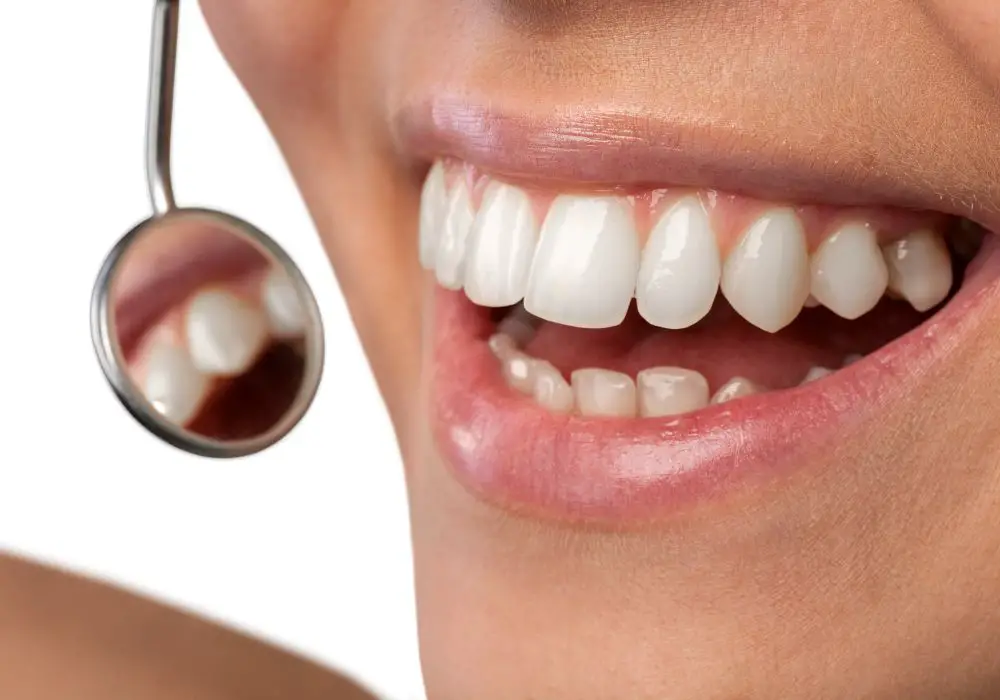
Here are some extra precautions you can take to reduce plaque and prevent tartar:
- Choose toothpaste with tartar control ingredients like pyrophosphate, zinc citrate, etc. Look for the ADA Seal of Acceptance.
- Buy an electric toothbrush with timers and pressure sensors to ensure adequate brushing time and force. This improves plaque removal.
- Have professional fluoride treatments done periodically to strengthen tooth enamel against plaque acids.
- If you have orthodontic appliances like braces or retainers, take extra care to brush carefully around them.
- Avoid smoking as nicotine and tar from cigarettes promote tartar and plaque buildup.
- Monitor tartar-prone areas at home and inform your dentist if deposits are recurring frequently between visits.
- Patients with dry mouth are at higher risk for tartar and decay as saliva flow is reduced. Ask about prescription mouth rinses if this is an issue.
- Improve diet by reducing starchy, acidic, and sugary foods and eating more tartar-deterring foods like cheese, green tea, apples, celery, or nuts.
With diligence and making oral health a priority, you can keep tartar at bay and prevent damaging complications.
Frequently Asked Questions about preventing tartar
Q1. How often should I get my teeth cleaned to prevent tartar?
The American Dental Association recommends getting professional teeth cleanings at least every 6 months to prevent tartar buildup and protect your oral health. Some people prone to developing heavy tartar may need dental cleanings more frequently – every 4 to 5 months.
Q2. Can I use home remedies to remove tartar?
No, hardened tartar that adheres to teeth can only be safely removed by professional teeth cleaning methods. Trying home remedies like scraping with fingernails or using baking soda or lemon juice can seriously damage tooth enamel and make problems worse.
Q3. What toothpaste is best to control tartar?
Look for toothpaste that specifically states it helps control or reduce tartar formation. Effective ingredients to look for include pyrophosphates, zinc citrate, triclosan, and stannous fluoride. Using toothpaste with the ADA Seal of Acceptance provides assurance that it works as claimed.
Q4. How do I know if I have too much tartar on my teeth?
The most obvious signs are visible yellow-brown deposits along the gumline and between teeth, bad breath or a stale taste, and increased tooth sensitivity. Softer early tartar buildup is difficult to detect at home. Getting regular dental checkups allows the dentist to monitor tartar development.
Q5. Can eating certain foods help remove tartar?
While no food can directly dissolve tartar, eating crunchy, fibrous foods can help clean teeth. Celery, carrots, apples, pears, leafy greens, nuts, popcorn all increase saliva flow and scrub teeth. They also balance mouth pH and discourage plaque bacteria. Limiting sugary, starchy foods avoids increasing tartar.
Conclusion
Left unchecked, tartar buildup poses a real threat to your dental health by promoting plaque formation, tooth decay, and eventually more serious gum disease. But with a good oral hygiene routine, using tartar control toothpastes, regular dental visits, and limiting sugary foods, you can effectively minimize tartar and keep your teeth cleaner and healthier for life. Making tartar prevention a priority will pay dividends with an attractive, brilliant smile for years to come!

